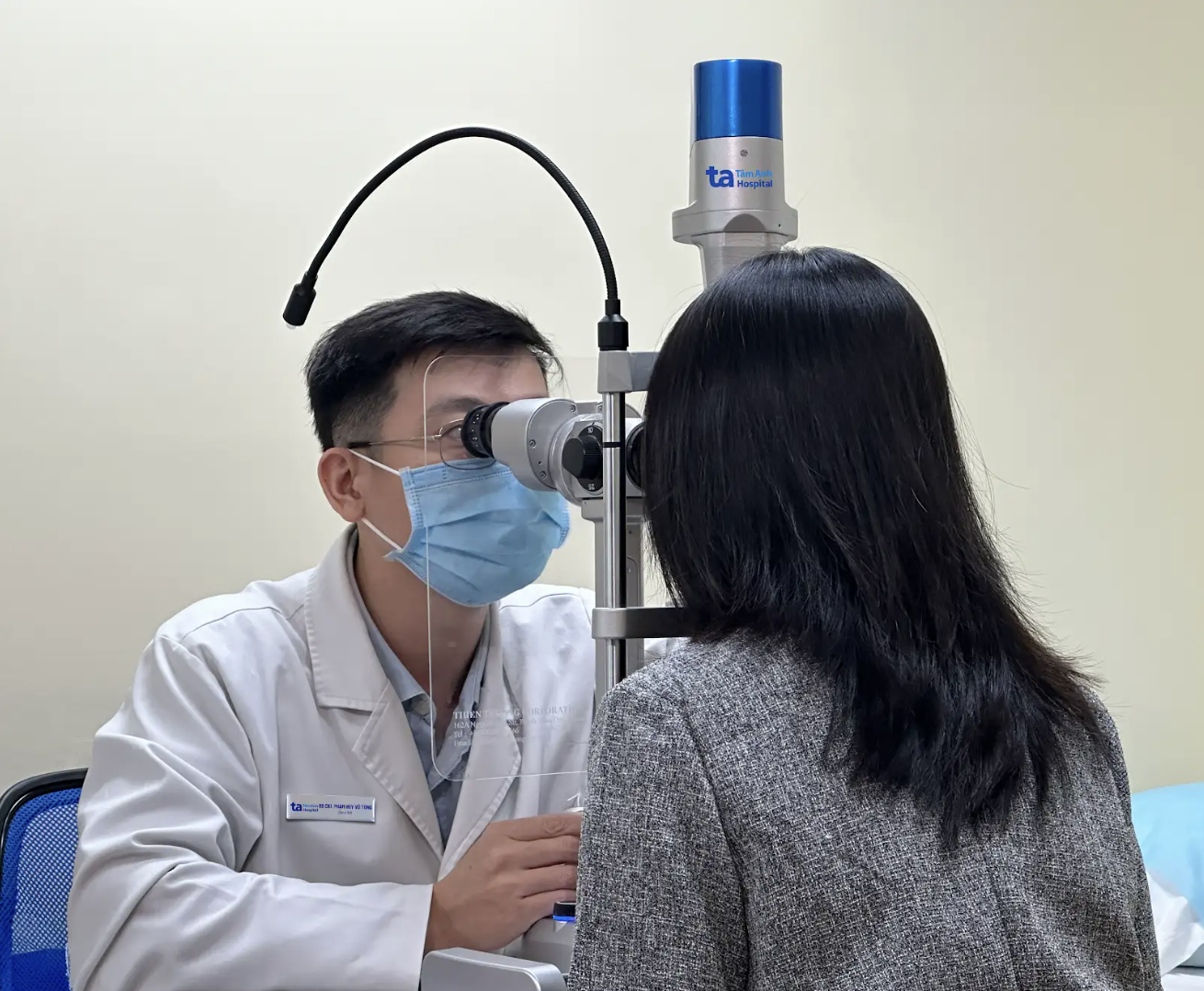Cataracts occur when the eye's natural lens loses its transparency, causing light to scatter or not reach the retina sufficiently, leading to reduced vision. According to Master, Doctor Pham Huy Vu Tung from the High-Tech Eye Center, Tam Anh General Hospital, TP HCM, cataracts are typically found in individuals over 60 years old. However, young people are now also susceptible to this condition due to various factors.
One primary cause is prolonged exposure to blue light and ultraviolet (UV) rays. Blue light, emitted from screens such as phones, computers, and televisions, possesses short wavelengths and high energy within the visible light spectrum. This light can penetrate deep into the eye, passing through the lens and reaching the retina. Long-term exposure risks damaging cells, leading to degeneration and denaturation of proteins in the lens, which causes it to lose its clarity.
Similarly, UV rays from sunlight can destroy and alter the protein structure within the lens, accelerating the aging process. Individuals who frequently work or spend time outdoors in the sun should wear UV-protective glasses to safeguard their eyes.
Another significant factor contributing to early-onset cataracts is the long-term use of corticosteroid medications. Corticosteroids interfere with the metabolism of sugars and proteins within the lens. This interference increases the metabolism of harmful substances, causing lens proteins to denature and aggregate, leading to opacification. Corticosteroids also diminish the activity of protective enzymes in the eye, resulting in damage to lens cells and a loss of transparency.
 |
Doctor Tung examines a woman's eye. Illustration: Tam Anh General Hospital |
Unhealthy lifestyle choices also play a role in the development of cataracts. Smoking, excessive alcohol consumption, a sedentary lifestyle, late nights, and an unbalanced diet are all contributing factors. Tobacco contains over 4,000 toxic substances, many of which damage eye tissues. A diet lacking balance, high in sugar and unhealthy fats, increases the risk of obesity and diabetes, leading to the accumulation of sorbitol (a type of sugar alcohol with slow metabolism) in the lens, causing swelling and clouding. Insufficient sleep and prolonged stress also reduce cellular regeneration and weaken the immune system, indirectly harming this part of the eye.
Eye trauma can also induce cataracts. A strong impact to the eye can tear or sever suspensory ligaments and disrupt protein structures. Damage to the lens capsule allows inflammatory cells to infiltrate, causing cataracts. This condition can appear immediately if the injury is severe, or it may manifest weeks to years later if the trauma triggers a slow degenerative process.
Genetic predisposition and underlying medical conditions increase the risk of cataracts. Diabetes, metabolic disorders, and high blood pressure are known to elevate this risk. Some forms of cataracts are congenital or develop early in life, either at birth or within the first few years. These cases are often caused by gene mutations and have a familial, hereditary nature.
To mitigate the risk of early-onset cataracts, Doctor Tung advises young individuals to limit direct exposure to blue light and UV rays, or to use appropriate eye protection. He also recommends avoiding the misuse of corticosteroid medications, maintaining a healthy lifestyle, and preventing eye injuries. Regular eye examinations every 6-12 months at hospitals with specialized ophthalmology departments can help detect related conditions early, if present, and prevent the disease from progressing to a severe and difficult-to-treat stage.
Nhat Minh
| Readers can submit ophthalmology questions here for doctors to answer |












